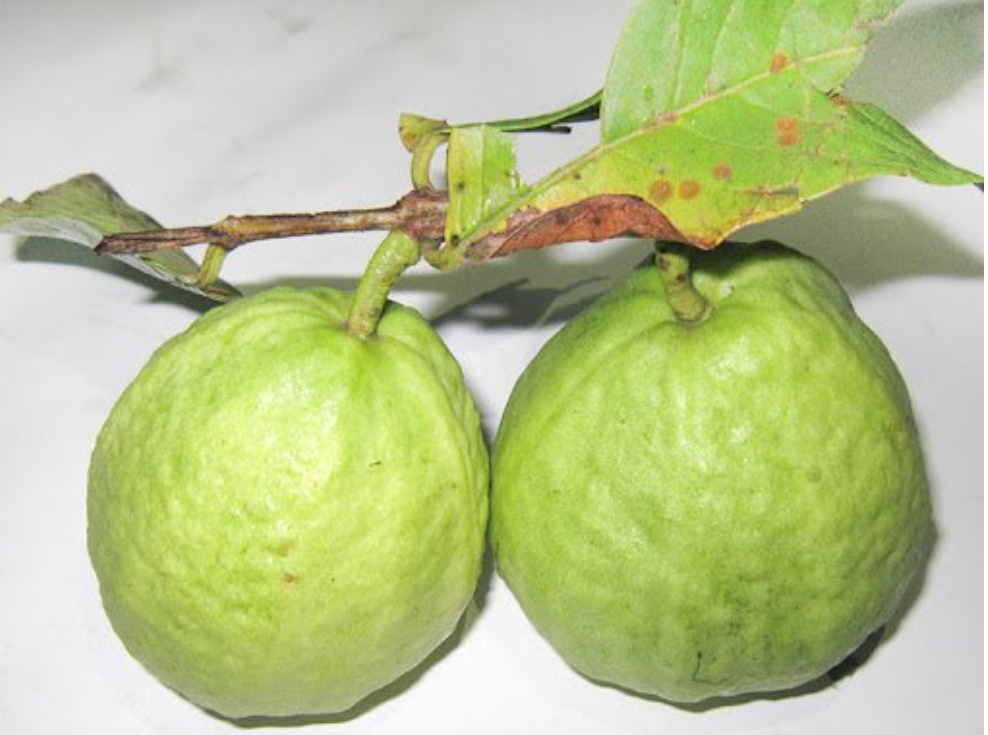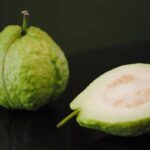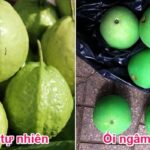Shape
The guava should be ripe but not overly so – a fully developed, well-rounded fruit is what you’re looking for. Avoid unripe, green guavas or overripe, mushy ones.
Guava Navel
The guava navel, or the bottom of the fruit, is where you’ll find remnants of the stigma and stamens. A larger opening at the navel indicates a riper guava. Typically, guavas with open navels are tastier than those with closed and deep ones.
The size of the guava navel is directly proportional to the ripeness of the fruit. If you prefer your guava less ripe, look for a small, tight, and deep navel. These guavas tend to be sour or astringent.

Guava Skin
When choosing a guava, pay attention to the skin. A good indicator of a tasty guava is a bumpy, slightly rough skin with some ridges and grooves. These guavas tend to have more flesh and less seed. On the other hand, smooth and shiny skins indicate a less flavorful guava with less flesh and a softer texture.
Color
Avoid guavas that are too green and lack a hint of yellow, as they are not ripe enough. The greener the guava, the more astringent and hard the flesh.
Ripe guavas have a light green to yellow hue, depending on the variety. When choosing from a bunch, select one with a color that matches your preferred level of ripeness.
A pale yellow guava is likely to be sufficiently ripe and tasty. If you prefer softer, riper guavas, go for a deeper yellow color. Regardless of the variety, naturally ripe guavas will have a bright, even color.
Weight and Firmness
A trick to buying tasty guavas is to feel their weight and firmness. Heavier, firmer guavas are likely to be ripe and crisp, while lighter, softer ones are overripe and sweeter.
Storing Guavas
Guavas ripen quickly and are challenging to store for extended periods. If you don’t plan on eating them right away, keep them in the refrigerator, preferably in the original foam packaging.
Alternatively, you can place them in a nylon bag and then into the refrigerator. Even when stored in the fridge, guavas will continue to ripen, and their flesh will soften over time. So, if you prefer crisp guavas, eat them fresh, and only refrigerate if you like them softer.
Note: Eating too many guavas may cause constipation.
Guavas are high in potassium, and excessive consumption can lead to constipation. It is recommended to limit your intake to half a large guava or one small guava per day. If you do eat more, make sure to drink plenty of water to prevent constipation.
According to Khoevadep
How to Choose a Delicious Guava Free of Harmful Chemicals
Mangoes are a popular fruit in Vietnam, loved for their delicious taste, nutritional benefits, and affordability. Unfortunately, some unscrupulous sellers take advantage of consumers by soaking these fruits in harmful chemicals to increase their profits. This raises a crucial question: How can consumers avoid purchasing mangoes treated with chemicals and ensure they are getting a safe and healthy product?











